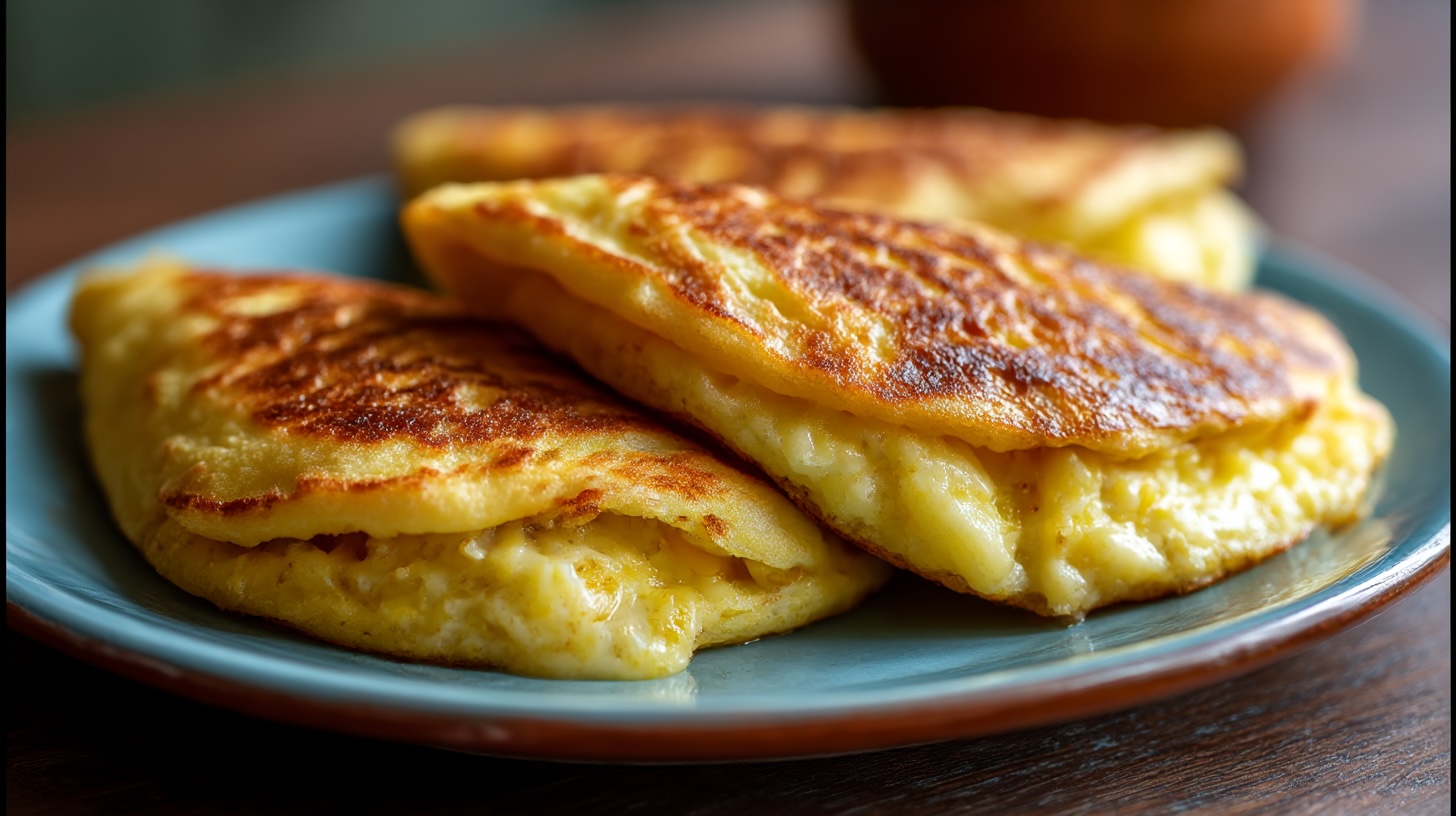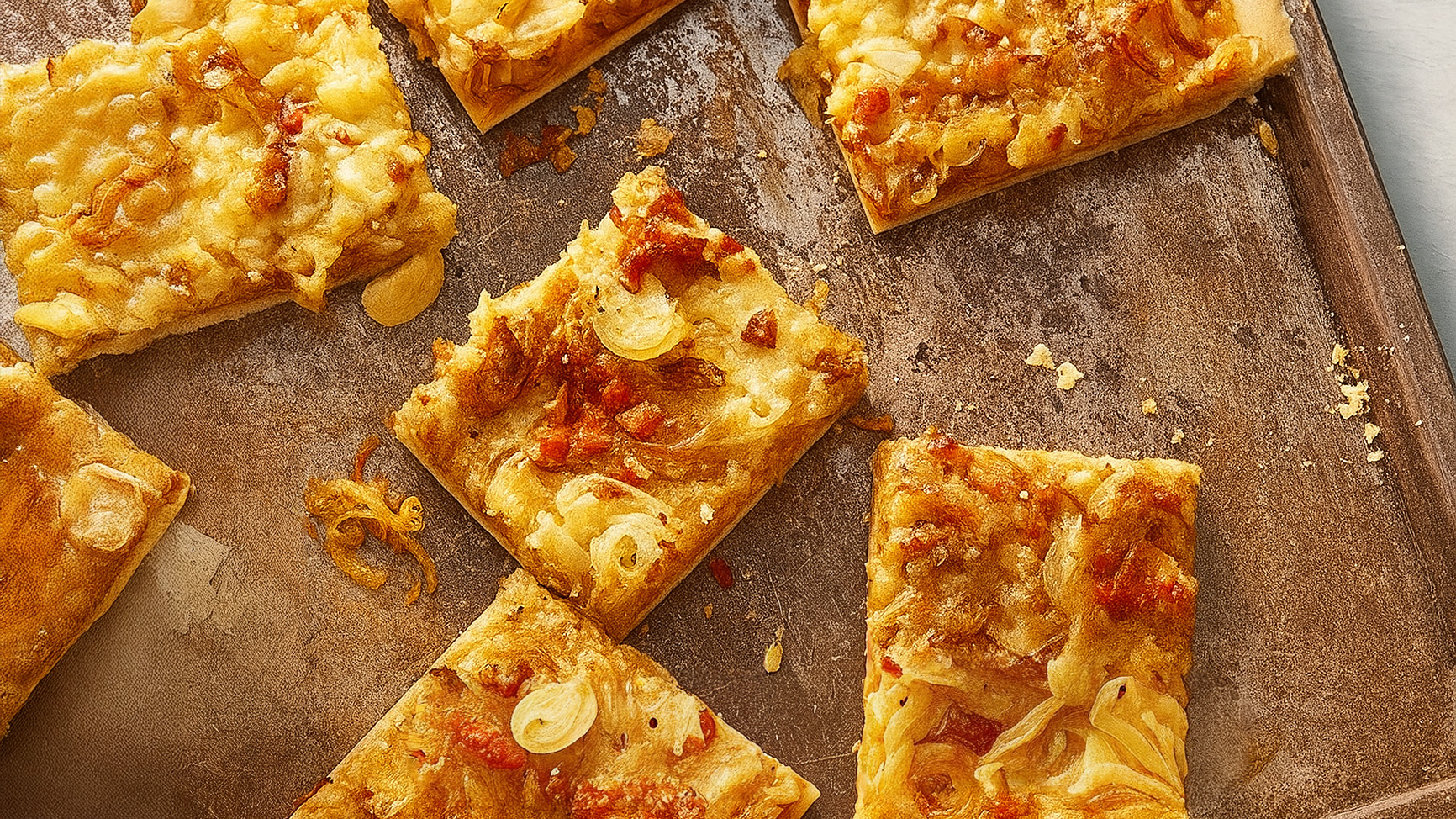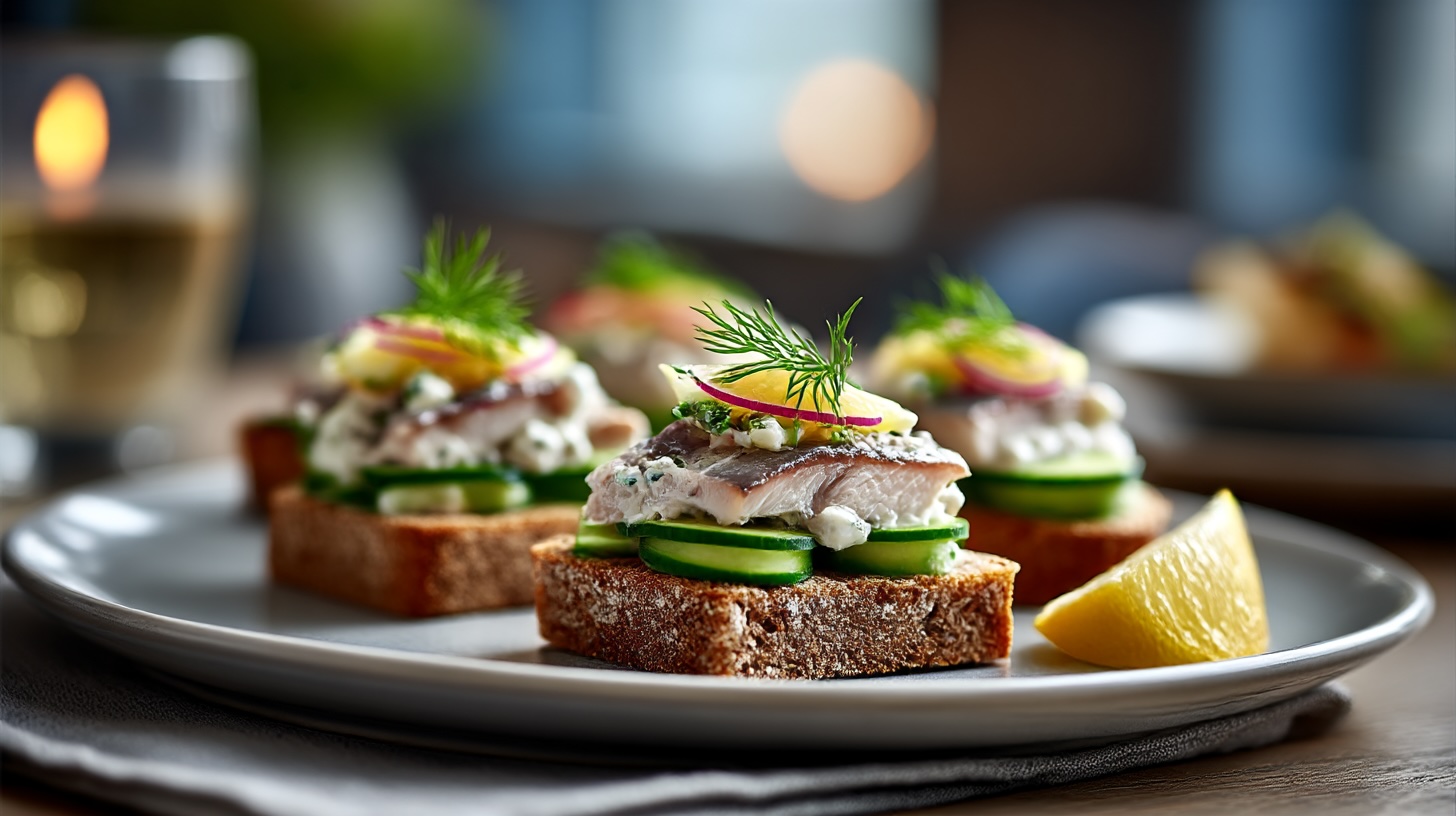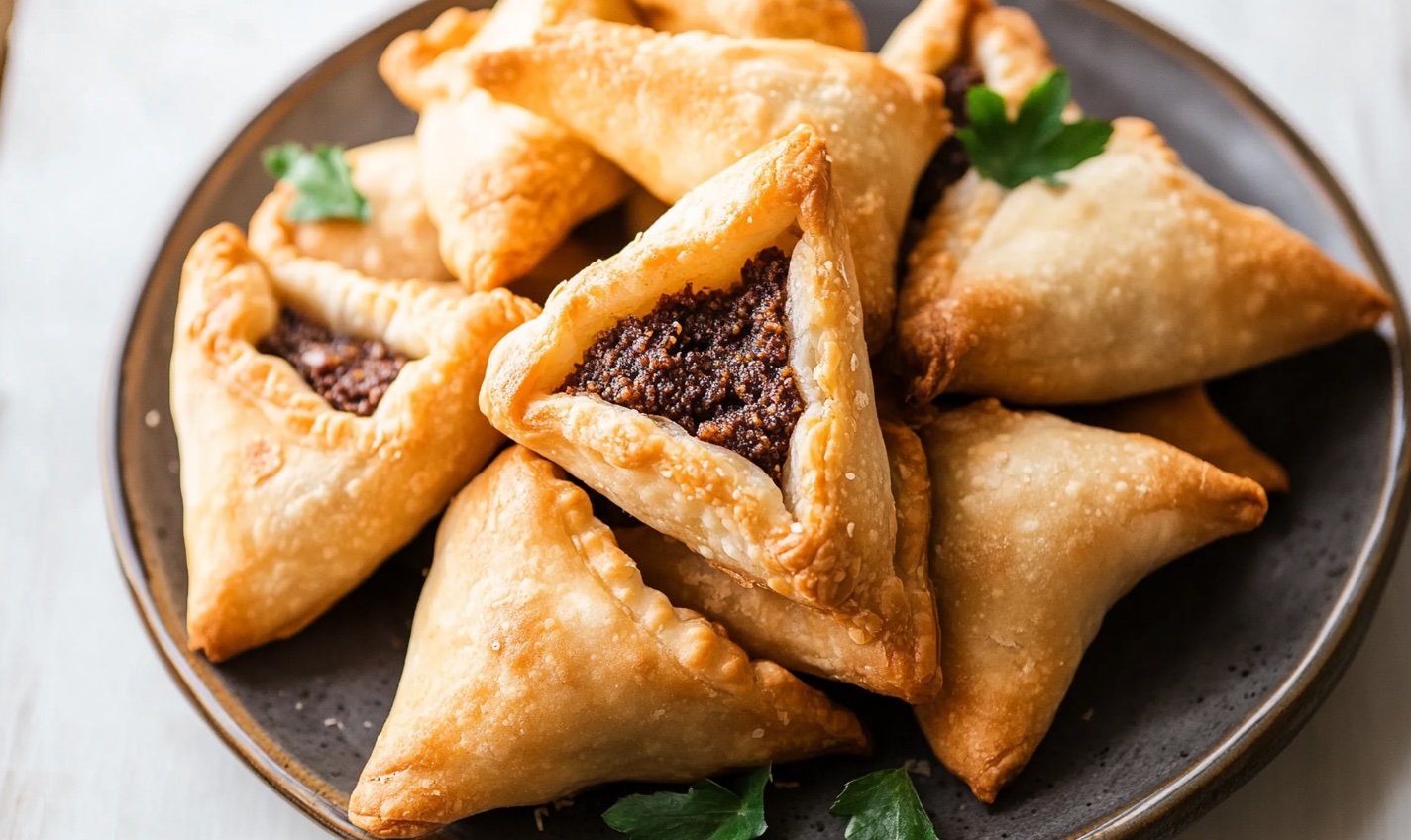Venezuelan Cachapa
If you find yourself in Venezuela, standing at a roadside food stall, a warm breeze fluttering past and the smell of grilled corn filling your nostrils, you’re probably moments away from meeting the queen of Venezuelan street food: the cachapa. Picture this: a golden, slightly crispy pancake made not from flour, but from fresh ground corn. Yes, actual corn. None of that dried, ground-up, sad-sack polenta nonsense. Fresh, juicy kernels blitzed into a batter, ladled sizzling onto a griddle, and flipped until it’s caramelised at the edges and soft in the middle. It’s sweet, it’s savoury, and it laughs in the face of moderation.
This culinary delight dates back to pre-Columbian times, long before the Spanish set foot on South American shores wearing unfortunate hats and colonial ambition. Indigenous peoples of the region were already grinding corn into various forms of nourishment, and cachapas were among them. The word itself might come from “kachapa” in an indigenous Caribbean language, loosely meaning “to cook on a griddle.” Over centuries, this ancient corn pancake evolved, stubbornly staying true to its base ingredient while adapting to Spanish culinary influences. But make no mistake: this is not a colonial remix. Cachapas are indigenous soul food with attitude.
And here’s where it gets glorious. What do you stuff into a hot, steamy corn pancake? Cheese. But not just any cheese. We’re talking about queso de mano, a white, stretchy, hand-pulled cheese that’s somewhere between mozzarella and burrata, but with more bite and a saltier tang. The heat from the cachapa melts it just enough to create that perfect gooey pull when you take your first bite. Sometimes there’s ham in there too, or shredded beef, or even avocado if you’re feeling righteous. But honestly, you could eat a cachapa with nothing but that cheese and feel like you’ve peaked.
The regional variations of cachapas are subtle but fascinating. In Caracas, you’ll find them served thick and plush, almost like a corn cake, while in the Llanos, they’re thinner and crispier, with slightly burnt edges that purists insist add character. In the Andes, some daring souls mix the batter with sweet milk or anise, creating a dessert-like cachapa that probably makes traditionalists clutch their pearls. And across the border in Colombia, you’ll see distant relatives like arepas de choclo trying to sneak into the conversation. Nice try, Colombia. We see you.
What makes cachapas so special? It’s the tension. The push and pull between sweet corn and salty cheese. The way the outside crackles while the inside stays tender. The fact that it’s both breakfast and lunch, snack and full meal, rustic and utterly indulgent. It’s comfort food with a flair for drama. Plus, they’re usually served from kiosks that smell like charred corn and hot oil and play reggaeton loud enough to make your fillings rattle.
To drink with a cachapa? Try papelón con limón, a kind of raw cane sugar lemonade that cuts through the richness like a zesty machete. Or maybe a cold chicha, the creamy, spiced rice drink that sits somewhere between a milkshake and a nostalgia trip. If you’re being unfaithful to regional loyalty, a crisp lager does the trick too, especially if the cachapa is loaded with pork.
Cachapas play well with others. Think fried plantains with garlic sauce, or a little mound of black beans on the side, or even a fried egg on top if you’re in a particularly celebratory mood. Some even tuck a little pickled onion salad alongside to keep things sharp. There are no rules, just glorious combinations.
Nutritionally, let’s not kid ourselves. A cachapa is not diet food, but it is gluten-free, if you’re keeping score. The fresh corn brings fibre, natural sugars, and some vitamin C to the table. Queso de mano adds calcium and protein, though also a fair amount of sodium and saturated fat. Basically, it’s good for the soul and fine in moderation, which is a polite way of saying don’t eat four in one sitting unless you’re emotionally prepared.
Where can you find cachapas if you’re not in Venezuela? Miami is basically the unofficial 25th state of Venezuela, so try Doral. Madrid, Barcelona, and even London now have Venezuelan areperas (think of them as arepa cafes) that serve up cachapas with the reverence they deserve. If you’re lucky, you might find one at a Latin American food festival or street fair, where they’ll be drawing queues longer than the churros stand.
Fancy making one? Here’s the recipe that will transport your tastebuds straight to a sun-soaked roadside in Venezuela:
Venezuelan Cachapa Recipe
Ingredients:
2 cups fresh or frozen corn kernels (thawed if frozen)
1 tablespoon sugar (optional, depending on how sweet your corn is)
1/2 teaspoon salt
1/4 cup milk
2 tablespoons cornmeal (for structure)
1 tablespoon melted butter or neutral oil
1/2 teaspoon baking powder (for fluffiness)
Butter or oil for cooking
Queso de mano, mozzarella, or other melty cheese
Instructions:
Throw the corn, sugar, salt, milk, cornmeal, butter, and baking powder into a blender. Blitz until you get a thick batter – it should be pourable but chunky, like lumpy pancake mix that got into a bar fight.
Heat a bit of butter or oil on a non-stick pan over medium heat. Pour in a ladle of batter and spread it into a circle. Cook until the bottom is golden and the top is set enough to flip without drama. Flip and cook the other side until golden too.
Slide it onto a plate, pile on the cheese, and fold like a taco. Let it sit for a minute so the cheese turns into a molten lake of dreams. Devour immediately, ideally while standing up and wearing flip-flops.
And there you go. A dish that proves once and for all that corn is not just a side dish or something that comes in a tin. It can be the main event, the headliner, the Beyoncé of the plate. Long live the cachapa.



